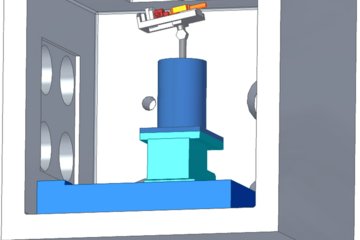All genres
61.
Journal Article
Analytical bounds of in-plane Young’s modulus and full-field simulations of two-dimensional monocrystalline stochastic honeycomb structures. Computational Materials Science 109, pp. 323 - 329 (2015)
62.
Journal Article
An Overview of Dual-Phase Steels: Advances in Microstructure-Oriented Processing and Micromechanically Guided Design. Annual Review of Materials Research 45, pp. 391 - 431 (2015)
63.
Journal Article
Multiscale deep drawing analysis of dual-phase steels using grain cluster-based RGC scheme. Modelling and Simulation in Materials Science and Engineering 23 (4), 045005 (2015)
64.
Journal Article
Assessing and ensuring parameter identifiability for a physically-based strain hardening model for twinning-induced plasticity. Mechanics of Materials 84, pp. 127 - 139 (2015)
65.
Journal Article
Numerically robust spectral methods for crystal plasticity simulations of heterogeneous materials. International Journal of Plasticity 66, pp. 31 - 45 (2015)
66.
Journal Article
Linking atomistic, kinetic Monte Carlo and crystal plasticity simulations of single-crystal tungsten strength. GAMM-Mitteilungen 38 (2), pp. 213 - 227 (2015)
67.
Journal Article
ICME for Crashworthiness of TWIP Steels: From Ab Initio to the Crash Performance. JOM 67 (1), pp. 120 - 128 (2015)
68.
Journal Article
Integrated experimental–simulation analysis of stress and strain partitioning in multiphase alloys. Acta Materialia 81, pp. 386 - 400 (2014)
69.
Journal Article
Strain localization and damage in dual phase steels investigated by coupled in-situ deformation experiments and crystal plasticity simulations. International Journal of Plasticity 63, pp. 198 - 210 (2014)
70.
Journal Article
Applying the texture analysis for optimizing thermo-mechanical treatment of high manganese twinning-induced plasticity steel. Acta Materialia 80, pp. 327 - 340 (2014)
71.
Journal Article
In situ observation of collective grain-scale mechanics in Mg and Mg-rare earth alloys. Acta Materialia 80, pp. 77 - 93 (2014)
72.
Journal Article
Interfacial dislocation motion and interactions in single-crystal superalloys. Acta Materialia 79, pp. 216 - 233 (2014)
73.
Journal Article
Dislocation density distribution around an indent in single-crystalline nickel: Comparing nonlocal crystal plasticity finite-element predictions with experiments. Acta Materialia 71, pp. 333 - 348 (2014)
74.
Journal Article
Alloy Design, Combinatorial Synthesis, and Microstructure-Property Relations for Low-Density Fe–Mn–Al–C Austenitic Steels. JOM-Journal of the Minerals Metals & Materials Society 66 (9), pp. 1845 - 1856 (2014)
75.
Journal Article
A spectral method solution to crystal elasto-viscoplasticity at finite strains. International Journal of Plasticity 46, pp. 37 - 53 (2013)
76.
Journal Article
Simulation of shear banding in heterophase co-deformation: Example of plane strain compressed Cu–Ag and Cu–Nb metal matrix composites. Acta Materialia 61 (12), pp. 4591 - 4606 (2013)
77.
Journal Article
Revealing the strain-hardening behavior of twinning-induced plasticity steels: Theory, simulations, experiments. Acta Materialia 61 (2), pp. 494 - 510 (2013)
78.
Journal Article
Non-crystallographic shear banding in crystal plasticity FEM simulations: Example of texture evolution in α-brass. Acta Materialia 60 (3), pp. 1099 - 1115 (2012)
79.
Journal Article
Orientation dependence of shear banding in face-centered-cubic single crystals. Acta Materialia 60, pp. 3415 - 3434 (2012)
80.
Journal Article
Simulation of dislocation penetration through a general low-angle grain boundary. Acta Materialia 60, pp. 5380 - 5390 (2012)











